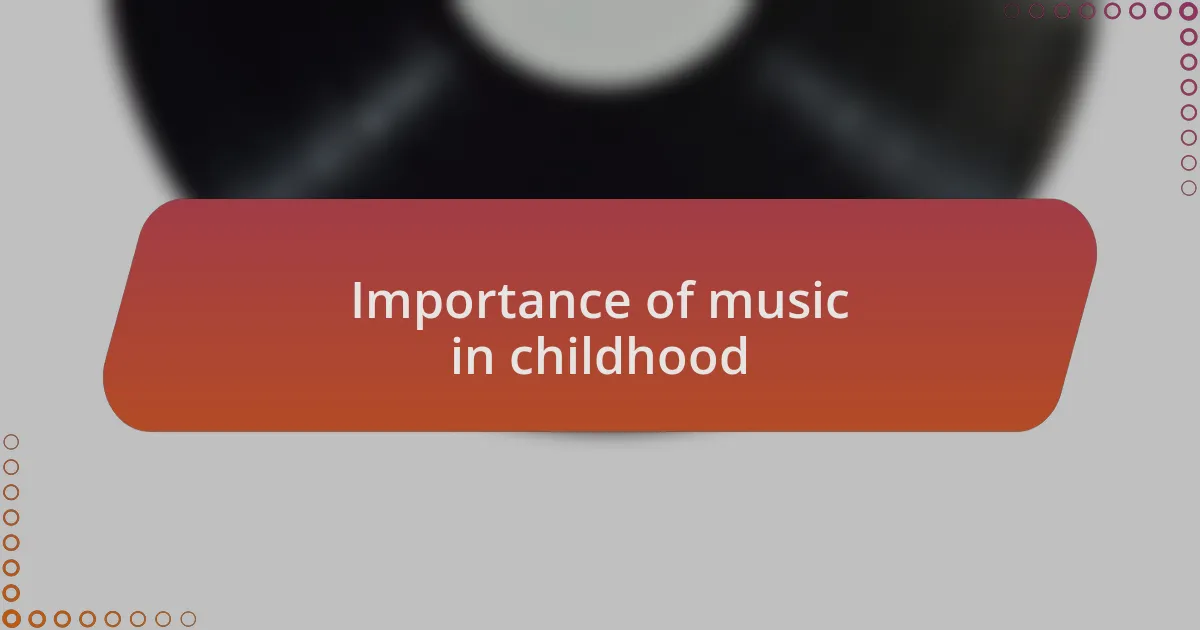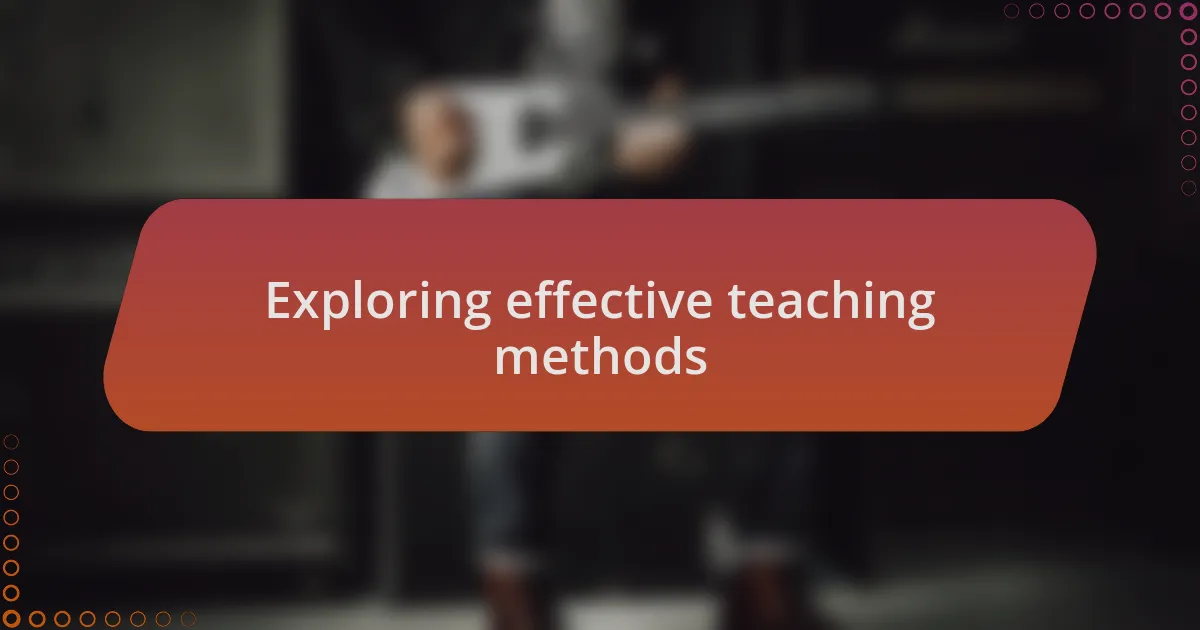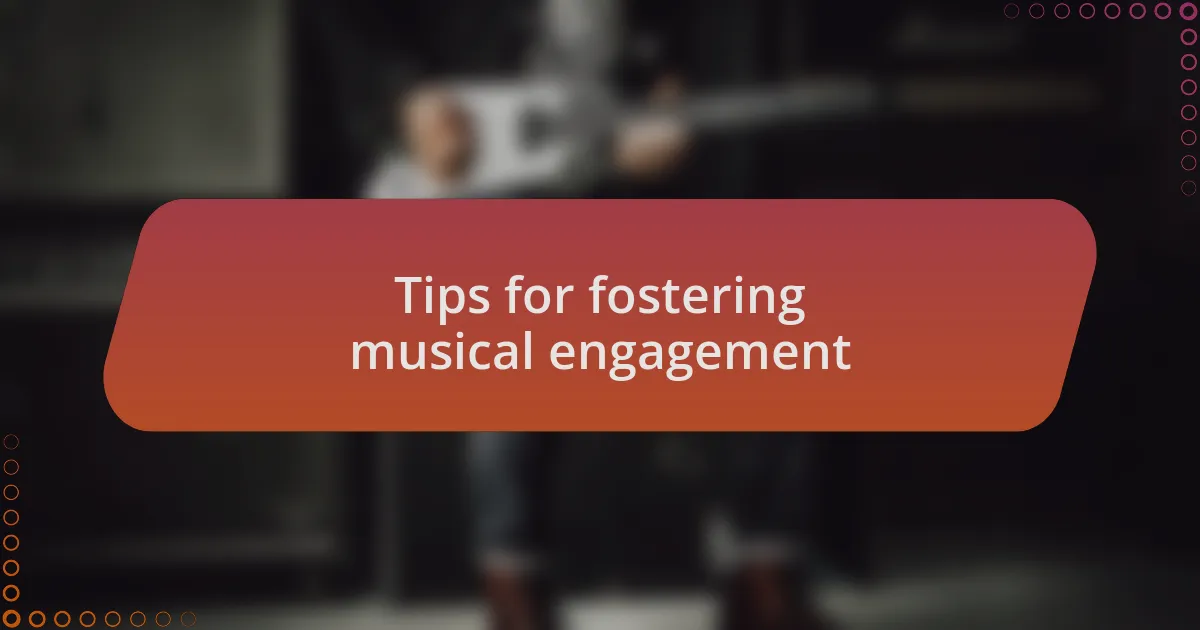Key takeaways:
- Children learn music theory effectively through play and engagement, using tools like flashcards and movement to cater to various learning styles.
- Music is essential for childhood development, enhancing emotional expression, cognitive skills, and fostering social connections.
- Incorporating storytelling, rhythm activities, and hands-on experiences makes music learning enjoyable and impactful, promoting retention and enthusiasm.
- Collaborative projects and a creative environment deepen children’s love for music while building camaraderie and confidence in their abilities.
Understanding children’s music theory
When delving into children’s music theory, I find that it’s essential to recognize how children absorb information through play. I remember watching a young student of mine light up when we used colorful flashcards to illustrate notes. That excitement not only made learning engaging but also helped solidify their understanding of musical concepts.
One of the fascinating things about children’s music theory is that it often mirrors the spontaneity and creativity found in childhood itself. I often ask parents how they see musical ideas reflected in their children’s daily lives. This connection fosters a deeper appreciation for music while revealing that learning theory doesn’t have to be rigid; it can be a joyful exploration of sound.
As I teach, I also notice how vital it is to cater to different learning styles. For instance, I had a child who thrived when we incorporated movement into our lessons, dancing to the rhythm while discussing musical scales. By tuning into these unique preferences, we can transform music theory into an experience that resonates not just in the classroom, but in children’s hearts as well.

Importance of music in childhood
Music plays a crucial role in a child’s development, acting as a bridge to a range of emotional and cognitive skills. I remember my daughter creating melodies on her little keyboard; her tunes were spontaneous expressions of her feelings. Isn’t it amazing how children use music not just to entertain themselves but to communicate emotions and ideas that words sometimes can’t capture?
When I reflect on my own childhood, I think about how playing an instrument taught me patience and discipline. It was through those challenging practices that I learned the importance of perseverance. Like many parents, I often wonder: how can we foster this sense of commitment in our own children? I believe that by introducing music early, we equip them with tools that benefit various aspects of their lives—from academics to social interactions.
Engaging with music also enhances memory and language skills. I recall a toddler in my class who struggled with retaining information. After we started incorporating songs into our lessons, I was amazed at how quickly she learned the lyrics and, consequently, the accompanying concepts. Could it be that music has a unique ability to unlock a child’s potential? In my experience, it certainly seems to do just that, making learning both pleasurable and effective.

Exploring effective teaching methods
Effective teaching methods in music often hinge on creating an engaging and interactive environment. I vividly remember a time when I introduced rhythm exercises using household items—like clapping on pots and pans. The kids weren’t just learning about beats; they were fully immersed in the fun of making music together. How much more effective can learning be when it feels like play?
Incorporating visual aids and movement into lessons can also spark a deeper connection to musical concepts. One day, I organized a mini-concert where children could express their understanding of dynamics by moving in different ways—soft movements for piano and big gestures for forte. The energy in the room was palpable, and I noticed that the children retained these concepts far better than through traditional teaching methods. It made me wonder: does movement create a pathway to understanding that static methods simply can’t achieve?
Another approach I’ve found beneficial is storytelling through music. While teaching a group of young learners, I used a narrative to frame a lesson about scales. By weaving a story about a musical adventure, children became more invested in the lesson, excited to discover what happened next. It’s fascinating to see how storytelling can enhance their engagement and retention of new material. Isn’t it intriguing how blending elements of creativity and education can unlock a child’s enthusiasm for learning music?

Practical activities for music learning
One practical activity that I’ve found incredibly effective is using simple body percussion to teach rhythm. I once had a group of kids tap, clap, and stomp their way through various patterns. It transformed the classroom into a lively space where they not only learned about rhythm but also developed a sense of camaraderie. Have you ever noticed how rhythm can bring people together? It certainly did for us that day.
Another engaging exercise involves instrument exploration. I remember when I brought in a variety of instruments, from drums to xylophones. The excitement on the children’s faces as they discovered sounds was priceless. They weren’t just observing; they were experimenting and problem-solving as they figured out how to create different tones. Isn’t it amazing how hands-on experiences can make abstract concepts, like timbre, concrete and memorable?
Additionally, I love incorporating songs that have repetitive patterns or call-and-response formats. During one session, we sang a familiar nursery rhyme with actions. When the kids echoed back their responses, laughter filled the room, and I could see the learning happening in real time. This method not only reinforces musical concepts but also builds social skills. How powerful is it that a simple song can foster both musicality and connection among children?

Personal experiences in teaching music
I’ve found that storytelling can be an incredibly effective tool in teaching music. I remember using a story about a lost note who needed to find its way home. As I narrated, I would play different musical scales, allowing the kids to help “guide” the note using their own voices. The children’s imaginations lit up, and it became a fun way to discuss musical movement. Isn’t it fascinating how we can connect music to our own narratives?
One memorable experience I had was when one of my students composed a short piece inspired by her pet. As she shared her creation, she described how the melody represented her cat’s playful nature. It was a heartwarming reminder of how personal connections to music can drive creativity. Have you ever noticed how much more engaging a lesson becomes when students bring their own lives into their music?
Moreover, I often encourage students to share their favorite songs. During one session, a boy introduced us to a pop song that led to a spontaneous rhythm exercise. Everyone started clapping along, and before I knew it, they’d transformed the classroom into a mini band. Seeing their enthusiasm made me realize that music is a universal language, one that speaks volumes when we let it reflect our individual tastes. How incredible is it that sharing a favorite song can spark creativity and collaboration in such a vibrant way?

Techniques that resonate with students
When I introduce rhythm activities, I’ve noticed that clapping or tapping to the beat often energizes my students. I once organized a game where we would create a rhythm pattern with body percussion, and then they had to mimic what I did. The laughter and excitement involved made it not just a lesson but an event! It was thrilling to see how, with each clap, they became more confident and engaged. How can something as simple as clapping build such a strong bond between students and rhythm?
I also love using visual aids to explain musical concepts. One day, I drew a colorful chart of musical notes on the board, integrating images that represented each note’s duration. The visual connection helped the kids grasp the idea of whole notes, half notes, and rests much quicker than traditional methods. It was rewarding to see their eyes light up as they pieced together how notes fit into the bigger picture of music. Doesn’t it strike you how effective visuals can be in making complex ideas more accessible?
Another technique I find valuable is incorporating movement into our lessons. I often lead my students in a “musical statues” game where they freeze when the music stops. Once, during this game, a quiet student surprised everyone by showing off a dance move that resonated with the music. Her confidence grew in that moment, and it reminded me how movement can transform a classroom atmosphere. Have you ever experienced how physicality can enhance a child’s understanding of rhythm and melody?

Tips for fostering musical engagement
Creating a musical environment that sparks joy is essential for fostering engagement. I recall a time when I brought in a variety of instruments for an impromptu jam session. The sheer delight on the children’s faces as they experimented with different sounds reminded me that exploration is a powerful motivator. How often do we overlook the excitement of hands-on experience in favor of more structured learning?
I also believe in the power of storytelling within music. One day, we connected a piece of music to a story about a brave knight. As the children followed along, they began to mimic the emotions of the character through their playing. Watching them interpret the music with such passion made me realize that framing lessons within narratives helps them connect on a deeper level. Doesn’t it inspire you to think about how emotions bring music to life?
Another effective way to enhance engagement is through collaborative projects. I often set up small groups where kids compose their own simple melodies. One time, a shy group created a beautiful piece that both surprised and inspired them. It was such a joy to witness their teamwork blossom into something proud and tangible. Don’t you think that creating together not only builds camaraderie but also deepens their love for music?